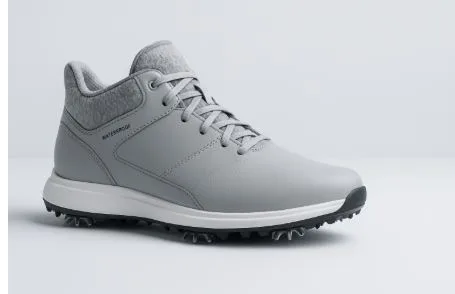Mastering cold weather golf with the right gear
Golfing in winter requires special preparation to tackle the cold effectively. The right gear is crucial for maintaining comfort and performance. From footwear to clothing, each piece plays a vital role in your winter golf experience.
Playing golf during the colder months presents unique challenges that demand careful planning. As temperatures drop, having suitable gear becomes essential to ensure both comfort and performance on the course. Winter Golf Shoes are particularly important for navigating cold, damp terrains, offering stability and warmth. Understanding how to equip yourself with the right clothing and accessories is key to enjoying a successful game in winter conditions.
Choosing footwear for winter golf
When golfing in winter, selecting the right footwear is essential. Golf shoes designed for cold and wet conditions are crucial for maintaining comfort and performance. Look for features like waterproofing to keep your feet dry, which is vital in preventing discomfort during play. Insulation within the shoes helps retain heat, ensuring your feet stay warm even in low temperatures.
Grip is another important feature to consider in winter golf shoes. Courses can become slippery due to frost or rain, making it challenging to maintain balance. Shoes with enhanced traction provide better stability and prevent slipping, allowing you to focus on your swing without fear of losing footing. Investing in high-quality footwear designed for winter conditions ensures that you can tackle any course with confidence.
The combination of waterproofing, insulation, and grip makes a noticeable difference in performance. As you navigate through unpredictable winter weather, having reliable shoes tailored for these conditions supports your overall game strategy. This attention to detail in footwear selection empowers you to maintain peak performance regardless of the elements.
Layering clothing for warmth and mobility
Layering is a strategic approach to staying warm while preserving mobility on the golf course. Start with a base layer made from moisture-wicking materials that draw sweat away from your skin, keeping you dry and comfortable. This layer sets the foundation for effective thermal regulation throughout your game.
The middle layer should provide insulation by trapping heat close to your body. Fleece or merino wool garments are excellent choices due to their insulating properties without adding bulk. These materials allow for movement while ensuring warmth is retained as you swing or walk between holes.
A windproof outer layer completes your ensemble, offering protection against brisk winds common in winter months. Opt for jackets or vests with breathable fabrics that shield you from the elements while allowing excess heat to escape. By combining these layers thoughtfully, you achieve a balance between warmth and flexibility that enhances your gameplay.
Using accessories to enhance comfort
Accessories play a crucial role in protecting against winter’s chill while optimising performance on the course. Thermal gloves are indispensable for maintaining grip and dexterity; some modern designs incorporate technology like heating elements for added warmth without bulkiness.
A warm hat is another must-have item, as significant heat loss occurs through the head. Choose hats made from insulating materials that cover your ears, offering full protection from cold winds. Thermal socks add another layer of defense by keeping feet warm and preventing discomfort during long rounds.
Beyond traditional accessories, technology has introduced innovations such as moisture-wicking fabrics that help regulate body temperature and keep sweat at bay. These advancements ensure you remain comfortable throughout your game, allowing you to focus entirely on strategy rather than battling the elements.
Adapting strategies for winter conditions
Navigating a course during winter requires adjusting your playing strategy to account for varied conditions such as frost or wet ground. Recognising how these factors affect ball behavior is crucial; frost can cause balls to roll differently on greens, necessitating recalibrated shots.
Your swing may also need adjustments due to heavier air density affecting ball flight distances. Experimenting with club selection can mitigate these effects; using clubs designed for distance may help compensate for reduced ball travel.
Understanding the course’s layout in winter helps anticipate areas prone to waterlogging or ice formation. Strategically planning shots around these obstacles prevents mishaps and maintains game flow seamlessly. Adapting your approach based on environmental cues ensures that even under adverse conditions, your performance remains consistent.






